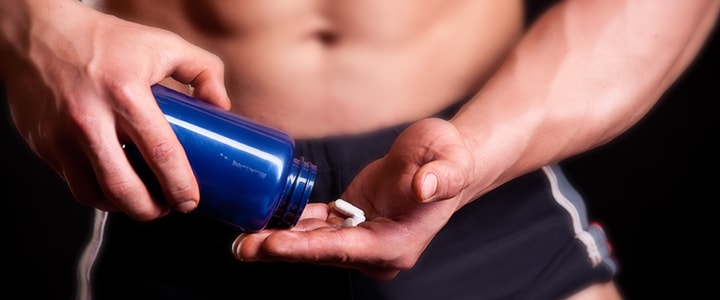Athletes and Pain Medication

Pain is a major obstacle for athletes. They can take steps to prevent the onset of injury, but athletes often choose to continue to train even when under a great deal of pain. Many athletes use pain medication in order to overcoming this challenge, but unfortunately pain medication can have drawbacks.
Understanding how pain medication works and the consequences of its long-term use let you make the best choice in managing pain with sports performance.
How Pain Medication Works
Pain medication comes in different forms. Non-steroidal anti-inflammatory drugs (NSAID) and salicylates (like methyl salicylate and aspirin) are effective in reducing inflammation.
These work by counteracting the production of prostaglandins, which are factors in the inflammation process.
Other pain medications like opiate agonists and acetaminophen are also powerful pain relievers that are useful in treating injuries related to athletics.
The following are just some the many well-known pain medications:
- Aspirin, Motrin, Aleve, Tylenol, Vicodin, Morphine.
Some common issues related to sports include muscle strains, joint sprains, plantar fasciitis, tendinitis, tennis elbow, and shin splints. Athletes often turn to these pain medication for fast relief.
Consequences of Overuse
Although medication can be useful for short-term treatment of pain and injuries, their long-term use can cause problems.
For athletes with pre-existing issues related to the gastrointestinal (GI) system, the use of NSAIDs and aspirin can exacerbate symptoms over time.
Bleeding in the GI system and pain related to the stomach and liver can develop from the overuse of these pain medications.
These drugs also affect blood platelets, and athletes who have any issues related to bruising or bleeding should be cautious when using them for pain management.
A Better Long-Term Pain Solution
Despite pain medication's ability to help athletes achieve a high level of performance, they fail to address the root cause of injury. This is why a comprehensive Chiropractic assessment/treatment offers a superior solution in eliminating pain and healing injuries.
The right level of conditioning allows you to strengthen weak muscles that can support your athletic performance. Using flexibility exercises lets you maintain an optimal range of motion to reduce the risk of injury.
A Chiropractor can help you design and implement a treatment program using a variety of tools such as manipulation, soft tissue therapy and Lasers. Learning how to perform exercises correctly and feel when your joints are not moving properly, will also ensure improved performance and less injuries.
